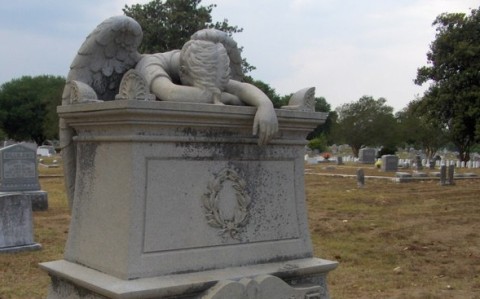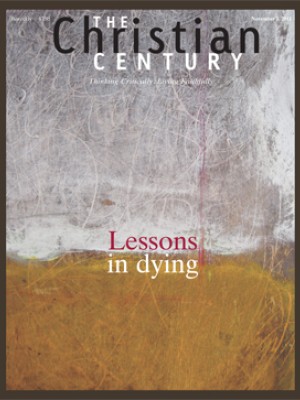Grieving together

When I became the student pastor of a small church I had no idea what I was getting into. The move from married student housing to a tiny parsonage was, I am ashamed to admit, more about the $50-a-week free housing and backyard for our infant daughter than about anything else. The first thing that happened after we moved in was that Johnny Johnson died. I faced the situation knowing nothing about funerals; my experience with death had been limited to the loss of a grandmother and an uncle when I was seven.
Now I was a pastor, obliged to respond to a call for help from the family of a dying man. When I arrived at the hospital, Johnny's breathing was labored and sporadic. His wife, Pearl, was beside herself. A son explained that she had not slept for days. She would agree to go home only if I stayed with Johnny during the night. I agreed—and spent a very long night sitting and watching a man die. Occasionally I patted his arm—the only thing I could think of to do.
Read our latest issue or browse back issues.
When he stopped breathing, it was my responsibility to call Pearl. She insisted on seeing her husband one more time, so I drove 20 miles to her house and back to the hospital. When she collapsed wailing into my arms, I had to carry her to the car.
At Johnny's funeral I read the funeral service from my new Book of Common Worship. I preached a sermon, but I don't know what I said. I know that it was brief and that it ended with the message of Romans 8:38–39: nothing, not even death, "will be able to separate us from the love of God in Christ Jesus our Lord."
In this issue, Allen Verhey reflects on how church and culture have responded to death and dying, and specifically to the "medicalization of death," the "death is natural" movement and the hospice movement. Lucy Bregman examines what ministers have been saying as they try to be faithful and useful at a time of death.
A person who taught me a lot about death was Granger Westberg, a Lutheran pastor on the faculty of both the divinity school and the medical school of the University of Chicago. His 1961 book Minister and Doctor Meet is still valuable. In his Religion and Personality class, we learned about Carl Rogers and client-centered therapy. We used to jokingly call it "shut up and listen" therapy, and we had great fun inserting the Rogerian "Do I hear you saying?" into everyday conversation. But the technique was extremely helpful to those of us who had no pastoral experience.
In 1962 Westberg wrote Good Grief, a small book that went through at least 16 printings (and was just republished last year in a 50th anniversary edition). He outlined the ten stages of a grief process that moved from initial shock, emotional release, depression, physical distress, panic, guilt, hostility and incapacitation to hope and a return to reality. I immediately recognized the stages as I listened to people in my congregation. Not everyone showed evidence of all ten, but I recognized shock, guilt and anger. It was enormously helpful to know that I did not have to try to talk people out of what they were very naturally feeling and experiencing.
Here is Westberg's conclusion: "It is not right that a person should try to carry on his grief work alone. People through the centuries have found new and unexpected strength in the words, 'I am with you always.' So we say, 'Grieve—not as those who have no hope,' but please, when you have something worth grieving about, go ahead and grieve."






